…without skipping a beat. This was the first time I’ve been able to accomplish that long-time goal.
One of the 3 known courtship displays performed by male Northern Mockingbirds is called the “flight display”. I’ve been trying to photograph it for years but the best I’ve been able to do was get one or two shots of the elaborate and athletic display before I either lost focus on the bird or I lost it in the frame entirely. But yesterday I was able to keep the bird in the frame from the beginning to the end of the display and most of the 17 photos were sharp enough for documentary purposes.
But there’s a caveat. I was only able to do so because I wasn’t close to the bird so these photos are very large crops and the image quality of some of them is less than mediocre. In addition the mockingbird was backlit. But I think there’s great value in being able to see the entire display and I was pretty proud of myself to get all 17 photos without clipping or cutting off any body parts, despite their lack of quality.
So, just what is the flight display of the northern Mockingbird? Cornell’s Birds of North America Online describes it as follows:
- A “flight display” is given from a high singing perch. A singing male jumps upward, flaps his wings once or several times, ascends a meter or two above the perch, and then parachutes down, wings open, onto the same or a nearby perch. White wing patches are conspicuous during the display, and the bird sings continuously. Unmated, territorial males give flight displays an order of magnitude more frequently than mated males. The frequency of the flight display fluctuates yearly. In one year when all the males in a population returned to their respective breeding territories, the display was almost nonexistent. In previous and subsequent years, when new males resided on some of the territories, it was common.
Lets see what it looks like. All 17 photos below are presented in the order they were taken.
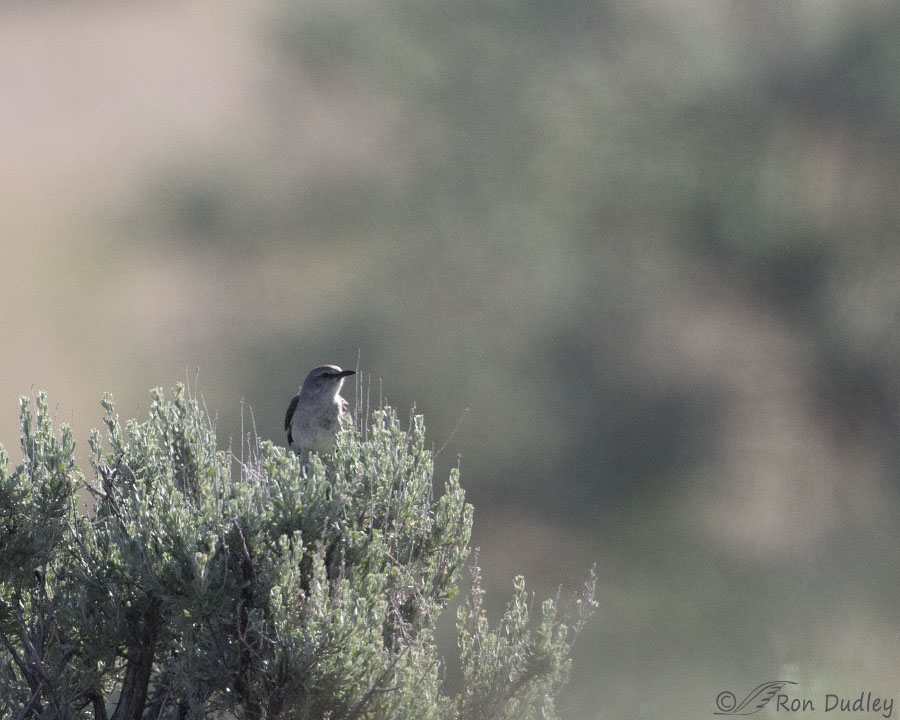 Before this series was taken I’d watched the mostly backlit male display from this sagebrush 3 times. At first I was frustrated because he was so far away but then I realized that his distance might be an opportunity to keep him in frame for the entire display so even though it wouldn’t be easy that was my intent when his next display began.
Before this series was taken I’d watched the mostly backlit male display from this sagebrush 3 times. At first I was frustrated because he was so far away but then I realized that his distance might be an opportunity to keep him in frame for the entire display so even though it wouldn’t be easy that was my intent when his next display began.
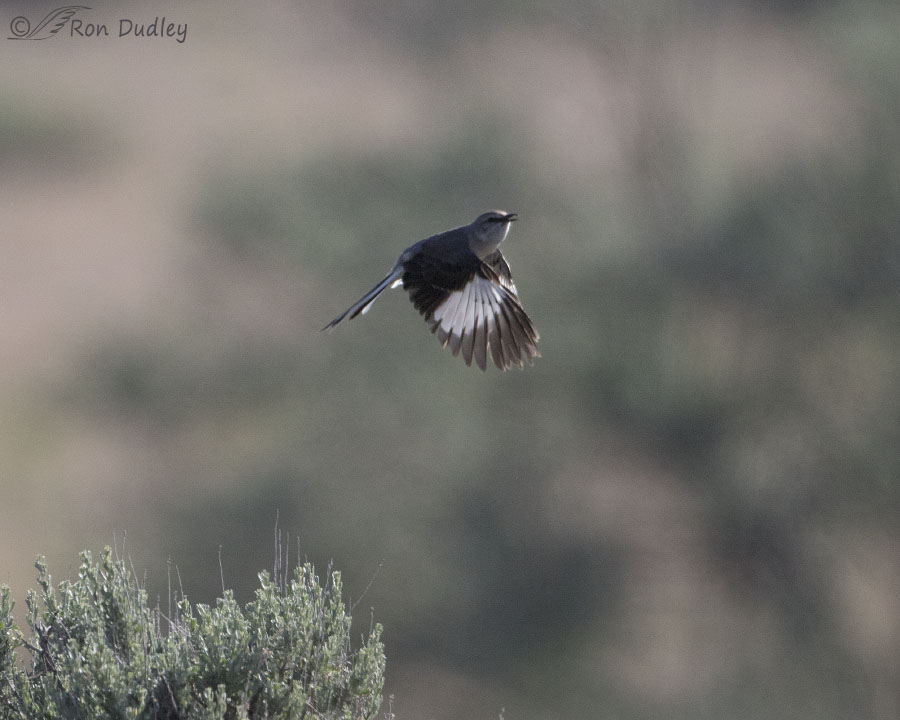
He launched upward.
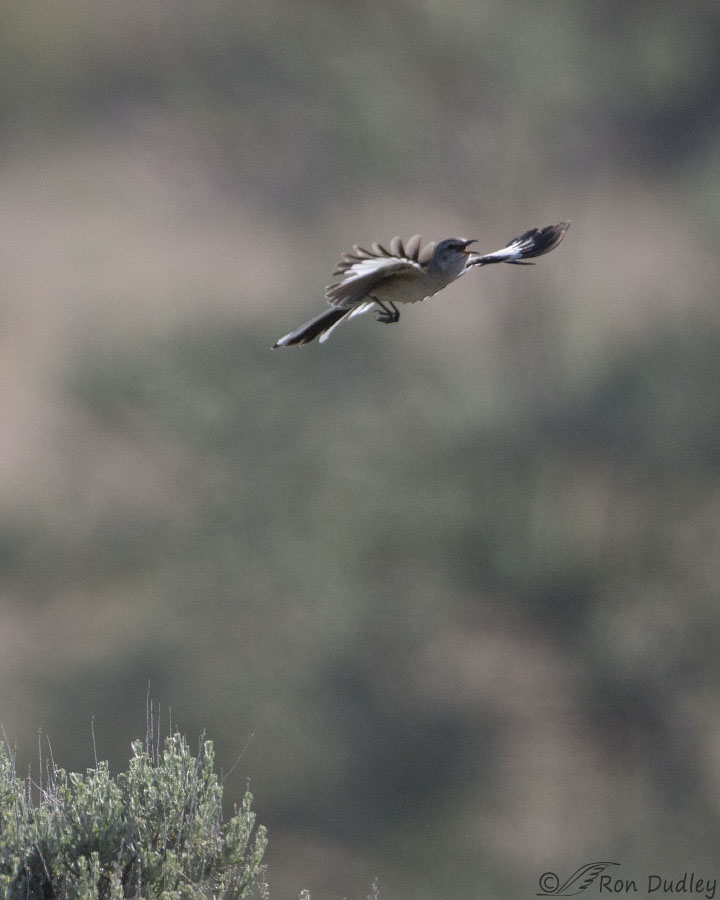
Notice that he was singing for the entire time of the behavior – just like BNA said they do.
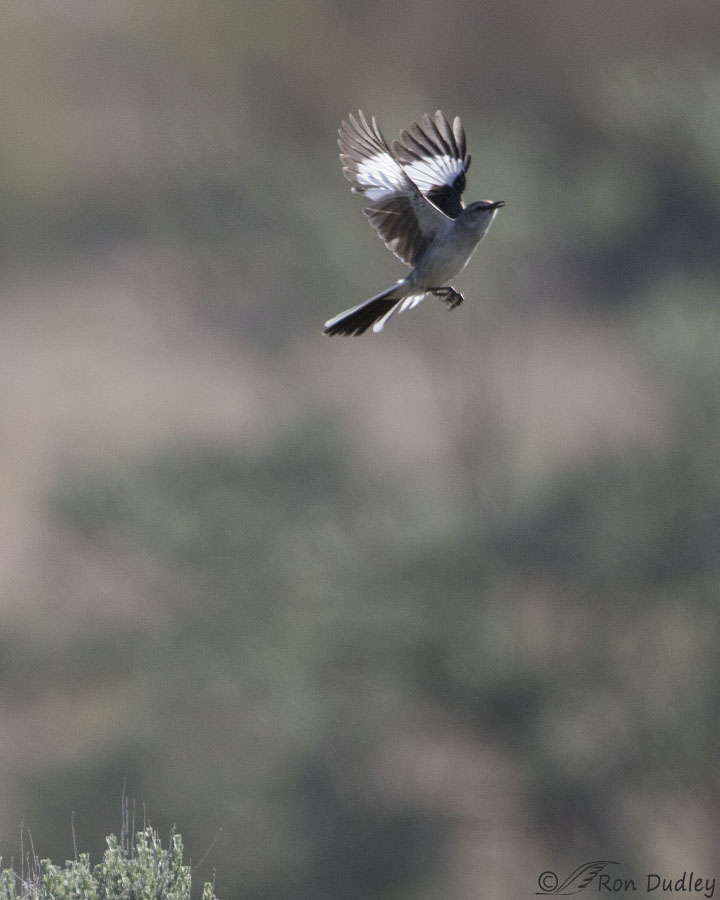
He continues to rise. As often as possible I’ve cropped these photos to keep his original perch in frame to give us an idea of his elevation.
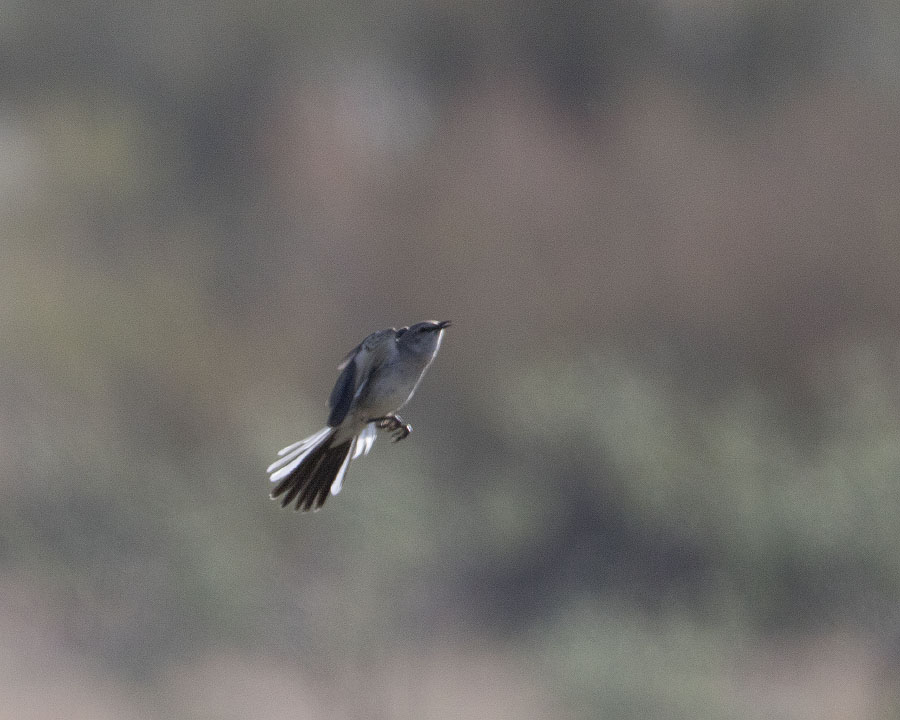
Now his flight path…
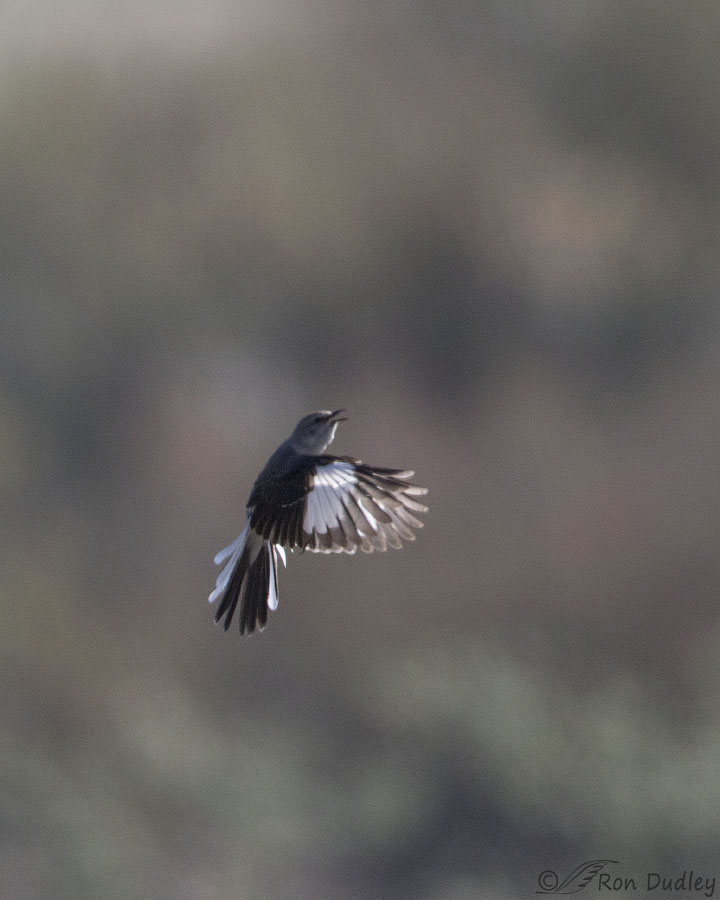
became even steeper.
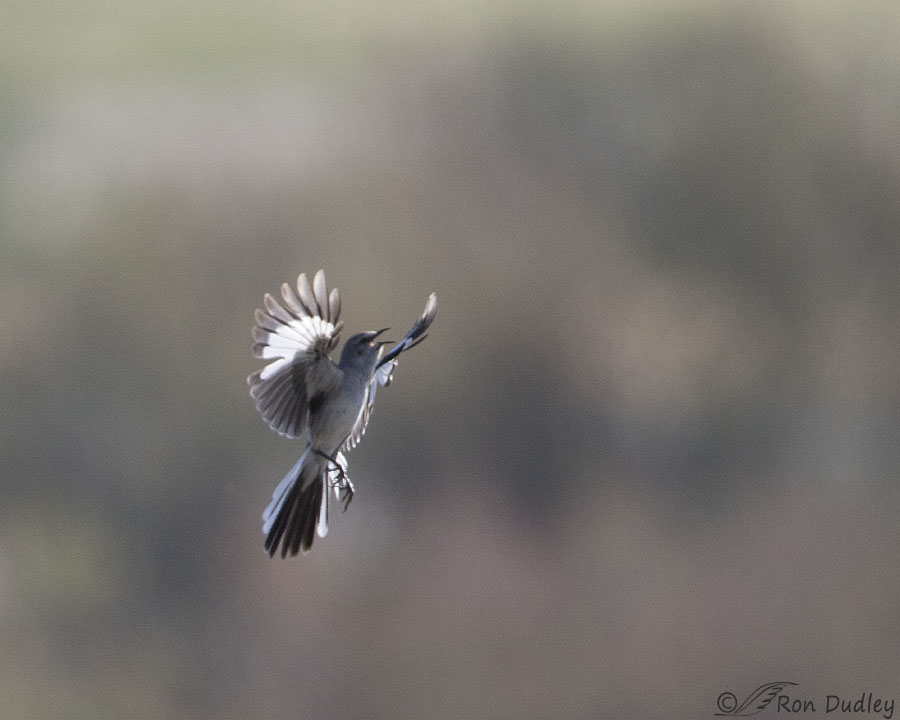
During the entire event he stayed almost directly above the original sagebrush perch.
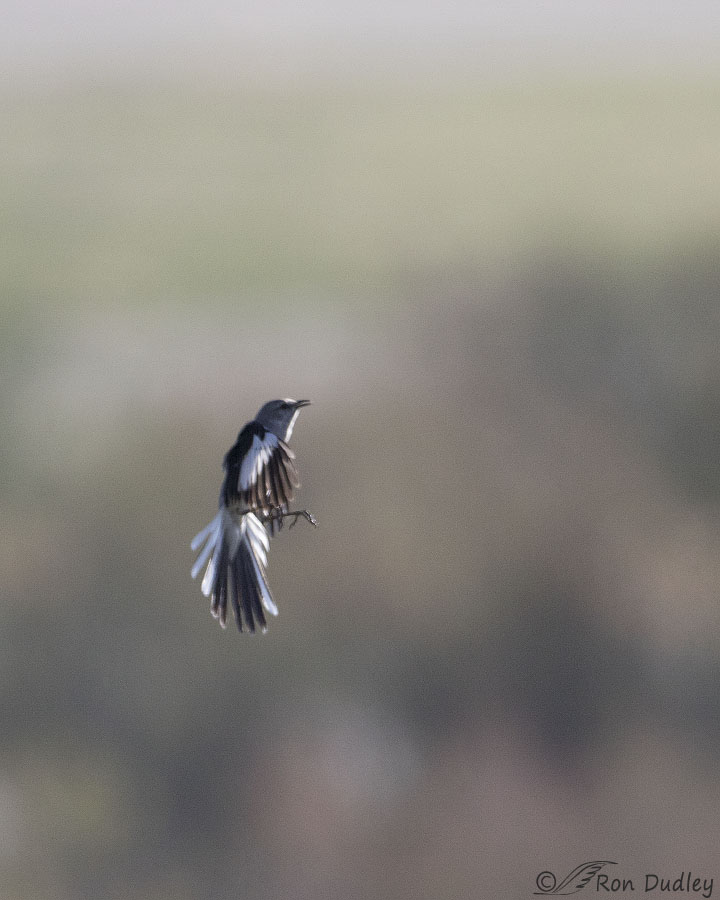
This shot is very soft because I was moving my lens quickly to try to keep him in frame as he flew straight up but I wanted to include the entire sequence of photos.
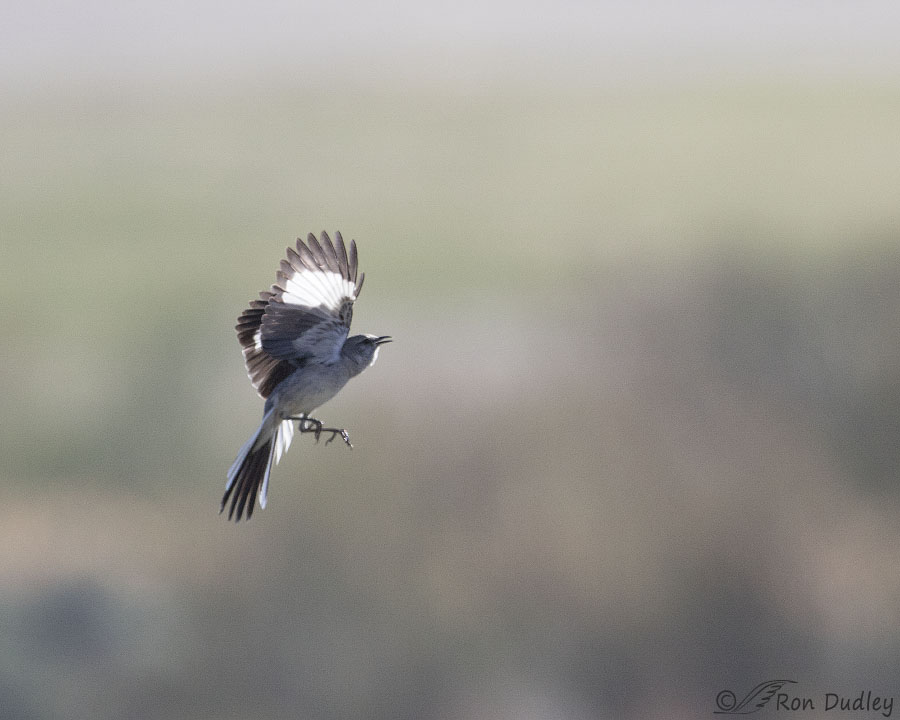
Here he’s finally reached the apex of his display flight and he immediately began to…
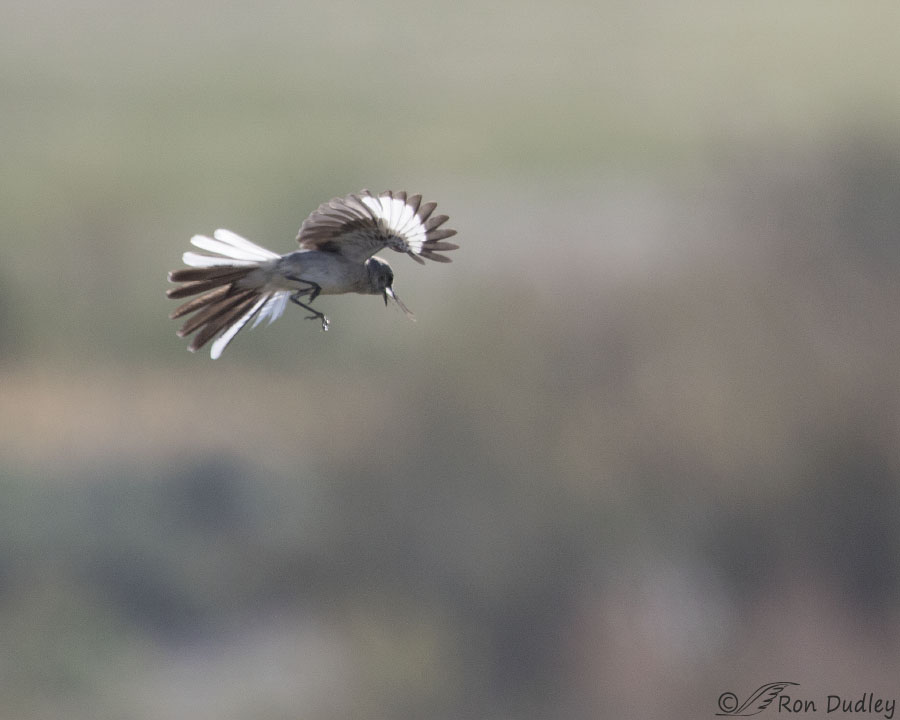
rotate forward and then parachute down.
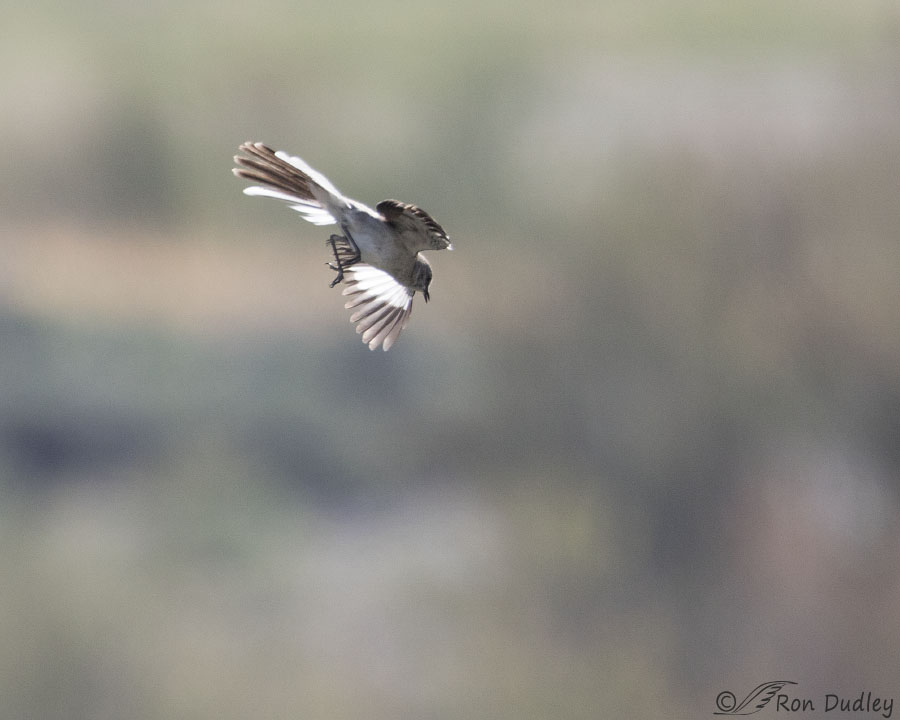
By now he’s relocated the original perch…
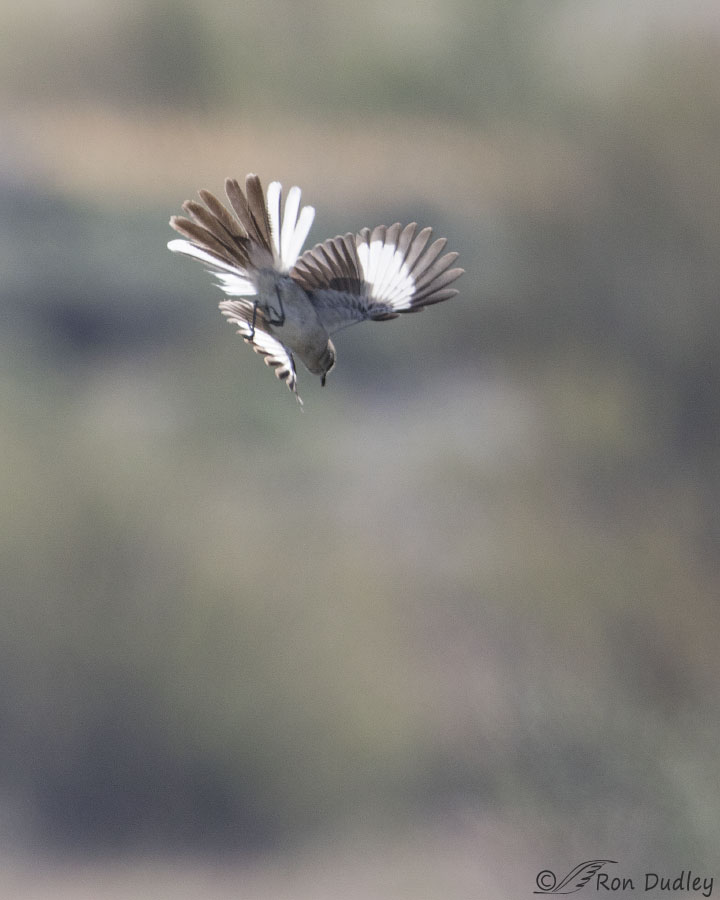
as he continues to parachute down toward it.
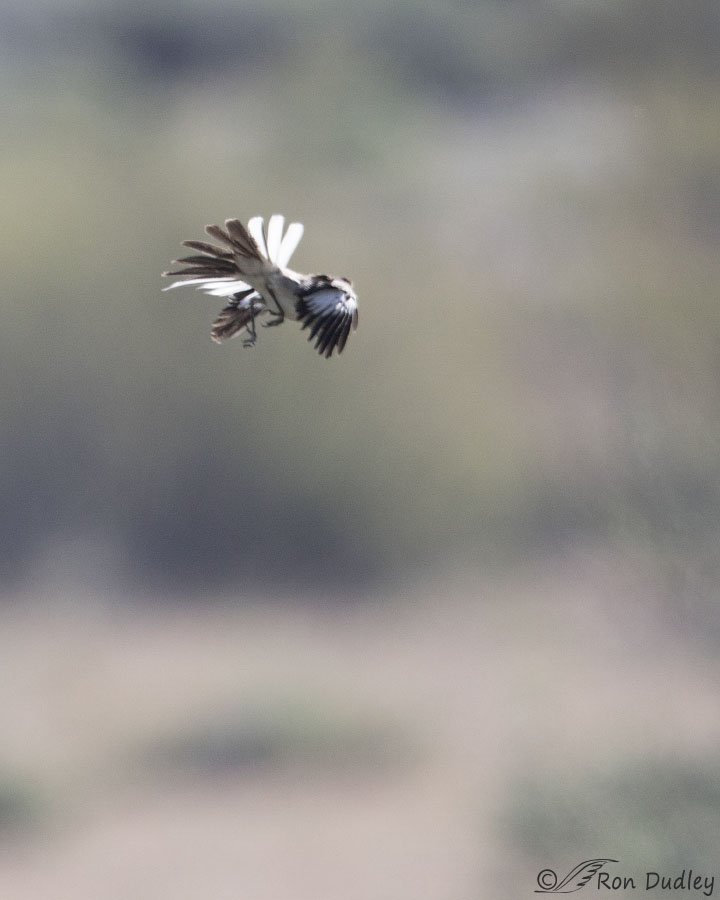
I couldn’t always see his head but I think it’s important to…
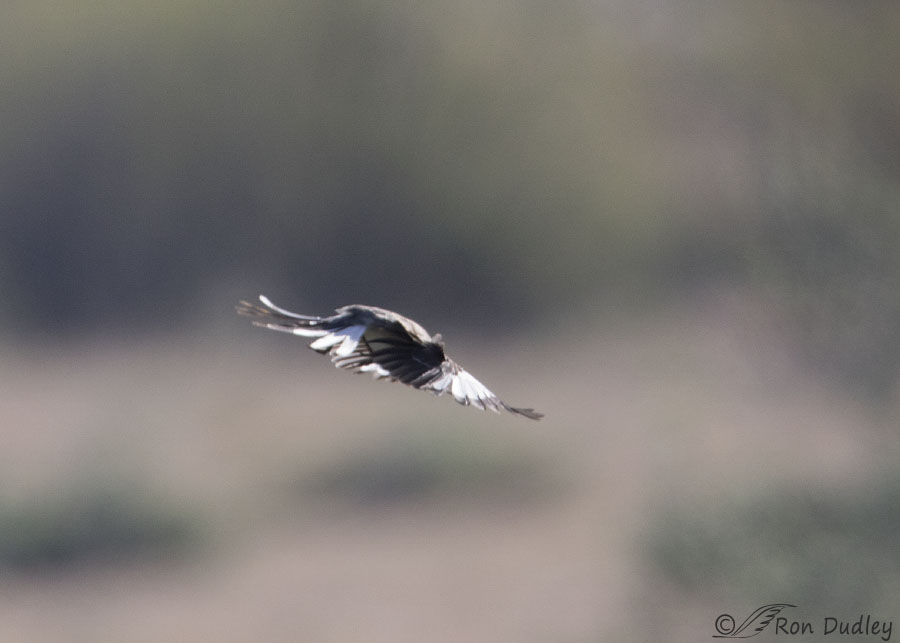
include every photo in the series.
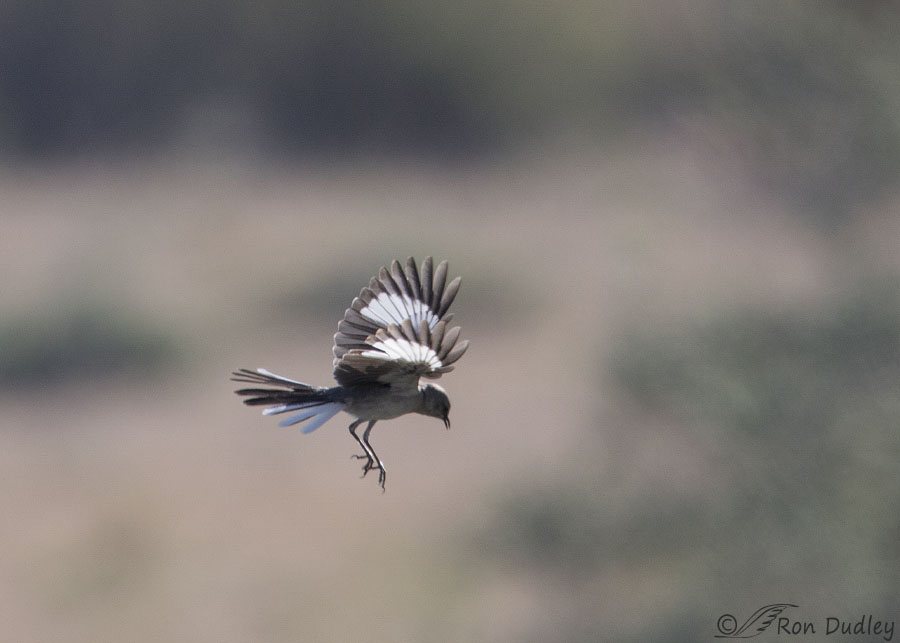
Wings held higher as he’s parachuting down allow him to fall more quickly and in combination with using his tail as a rudder he can “aim” toward the perch below him.
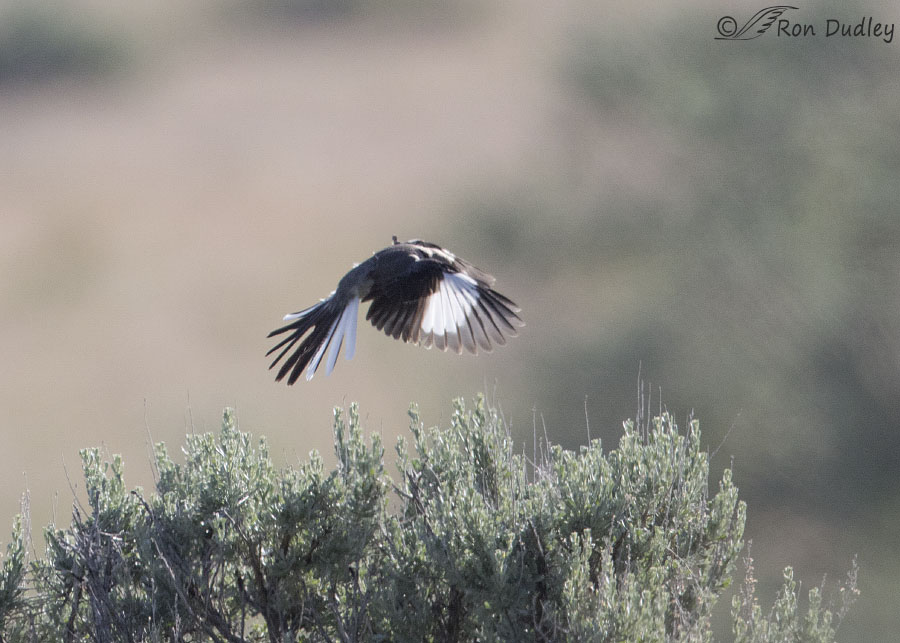
Almost there.
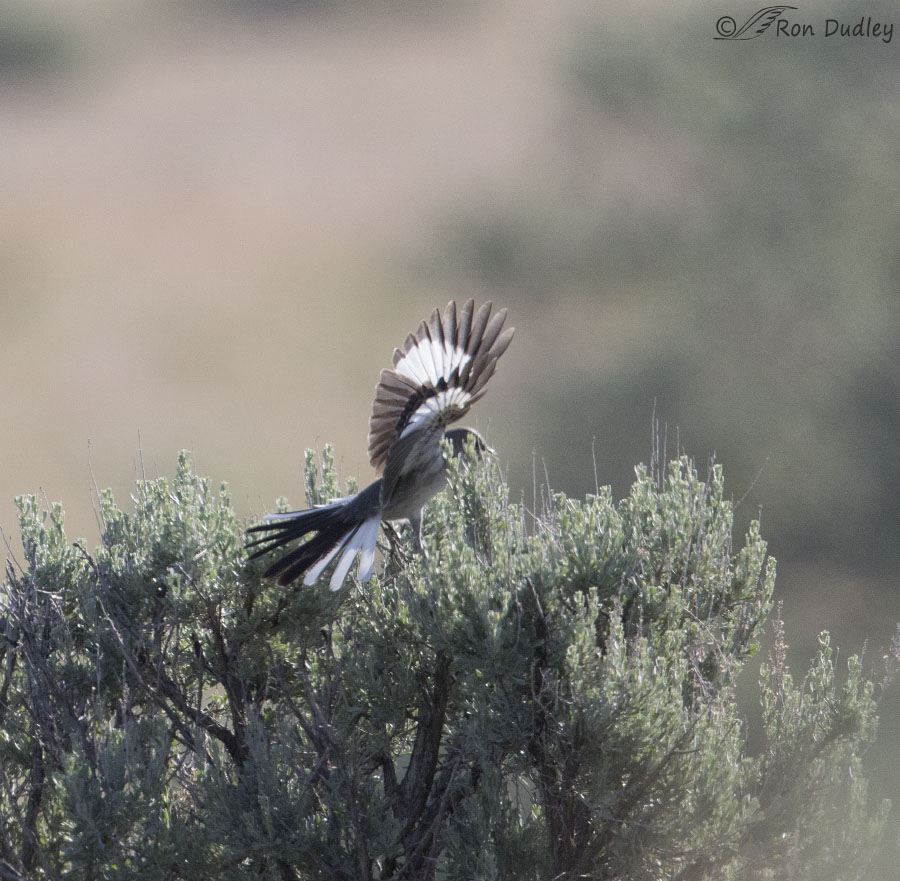
His landing was sort of a “plop” event but he did make it back down to the original perch only inches from where he began.
Given the burst rate of my camera (10 frames/second) the entire display from launch to landing took exactly 1.7 seconds. I was lucky to keep him in frame for the entire event so I shouldn’t complain too much about the distance involved or the back-light. Seeing all 17 photos gives me the best opportunity I’ve ever had to evaluate what actually goes on during the display flight because in the past my eye has always been glued to the viewfinder until I lost the bird in the frame.
It’s pretty strange for me to be as excited as I am about such poor quality images…
Ron
Note: Image techs for most of these photos were at or near: 1/3200, f/5.6, ISO 800, Canon 7D Mark II, Canon EF 500mm f/4L IS II USM + EF 1.4 III Extender.


It’s a joy to see the stop motion on bird displays like this. My eyes and brain can only register a general flight path when birds perform these attention grabbing feats.
Oooooh.
WHAT a display. And what a privilege to see and photograph.
Megathanks.
Thank you, EC.
Again, these posts of your are often a wonderful way to start my mornings. I enjoy the images as much as the musings.
Good! Thank you, Kelly.
Wonderful and beautiful!
Thanks, Sallie.
Excellent and wonderful! Our shared delight for this series can only be surpassed by the enthusiasm of the mockingbird himself.
You said that well, Robert.
WOW! These shots are priceless, as Kathy said. I have new respect for the little guys. This is definitely a “lifer” series. Congratulations!
Gotta admit, though, that when I saw your email this morning, I thought it said “fight” (we are talking Mockingbirds, after all) and was expecting shots of fisticuffs (wingicuffs?). In any event, this is definitely better.
Fight or flight – both types of photos are special in my book, Marty. Maybe one day I’ll get an aerial fight…
What a beautiful series!!! I especially like the first and last because of colors in the silvery sage …and the wonderful detail and expressions in all the flight shots…the background colors are exquisite!!!…This is an amazing series!!!
Thanks, Patty. I guessed you might enjoy that sage, given what you’ve said about it in the past.
Bachelor mockingbirds are such a delight and a pain. I had one outside my bedroom window. He. Never. Stopped. Singing. Lol I was ready to go catch a female of fifteen so he could find a lady friend. The leaps are really fun to observe. Love that you got this series.
I’m jealous of your mischievous mockingbird, Arwen. We don’t have many of them around here and I never see them in the city.
I grew up in North Louisiana. They are very common there.
1.7 seconds? It’s hard to believe that the bird could go that far in such a short time. If I were you, I would definitely be excited about catching this series. It is amazing that you could capture that display. I’ve been around and watched Northern Mockingbirds for most of my life (I had one that used to dive bomb my cat in the mornings right outside my bedroom, making loud noise in the process when I was a child), but have never seen such a display. I will have to watch them more closely now.
“1.7 seconds? It’s hard to believe that the bird could go that far in such a short time”
Yup, it’s a quick behavior given how far he travels, Susan.
Love this post, Ron. I remember seeing this eye-catching behavior once at Malheur but didn’t understand it as a mating display. Now I’ll enjoy it more if I’m fortunate enough to watch again. Thank you!
I hope you do see it again, Cindy. I think it’s always more interesting when we know what’s going on.
Great job Ron, regardless of the distance you certainly captured the display! Very well done!
Many thanks for sharing.
There definitely was an element of luck that I didn’t lose the bird, Dick. Don’t think I could reliably do it again.
Congratulations on achieving such a challenging goal ! I tried Kathy G.’s trick of scrolling down fast, and it’s almost like a kinescope ……also, I think that the backlighting is actually
an advantage in this series—makes the total body posture and its changes more dramatic and easier to follow. Imagine doing a set of calisthenics and SINGING simultaneously–wow !
Remarkable Ron, great job of keeping the bird in frame all the way through. Very interesting photos to view. Thanks for your outstanding effort.
Everett Sanborn, Prescott AZ
Amazing!
Charlotte
Thanks, Charlotte.
Wow – Ron, these are amazing!I’m so glad you were able to pause your perfectionist streak when it comes to your photos, which is super appreciated by the way, and share these photos with us. So much fun! Thank you.
“I’m so glad you were able to pause your perfectionist streak”
That made me smile, Miriam. Guess there’s hope for me yet!
Oh WOW!

 Amazing capture of the behavior regardless of quality! Quite an acrobatic performance that one wouldn’t catch the details of just “watching” tho I’m sure that’s also interesting to watch. The vertical climb is impressive!
Amazing capture of the behavior regardless of quality! Quite an acrobatic performance that one wouldn’t catch the details of just “watching” tho I’m sure that’s also interesting to watch. The vertical climb is impressive!
Thanks, Judy. I agree with you about how impressive the vertical climb was.
By the way, if I scroll through these quickly on my iMac, i can just about visualize it. Nice having the sagebrush at the bottom.
Fantastic! No matter if some of the shots are a little soft…just the opportunity to witness and document such an event…as they say ‘priceless’ ! Many thanks for sharing.
Thanks, Kathy. I was pretty excited to get every shot during the behavior, poor quality or not.